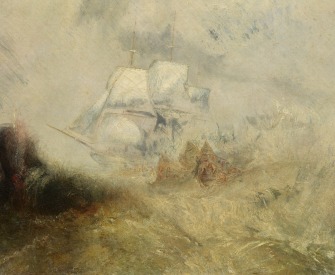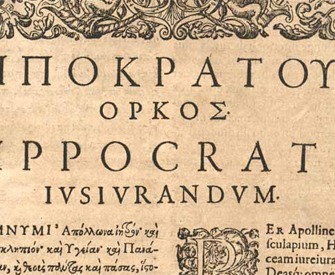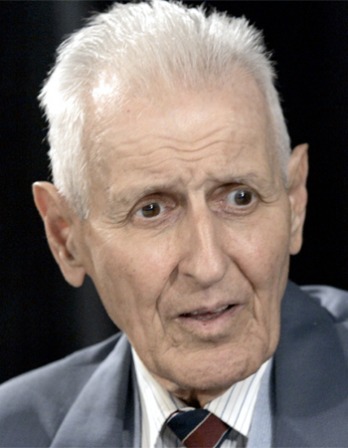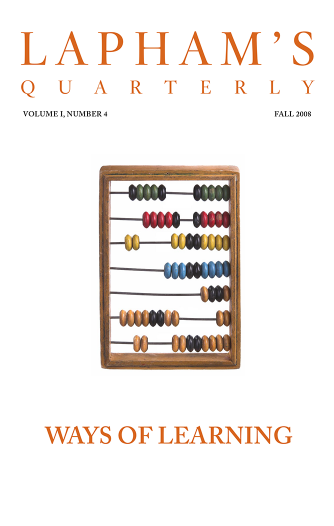All things are filled full of signs, and it is a wise man who can learn about one thing from another.
—Plotinus, 255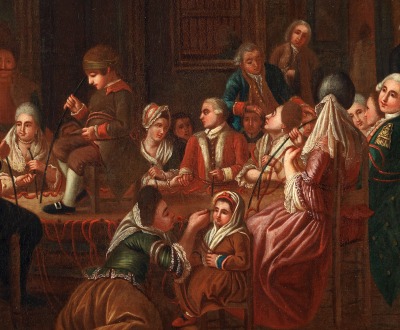
Mesmeric Therapy, by a French painter, c. 1778–84. Wellcome Library (CC BY 4.0).
Earlier this year at the hospital, where I am in training as a psychiatry resident, some colleagues were discussing the case of a young woman who had presented with worsening headaches. On CT scan she’d been found to have a meningioma, an often curable tumor of the membranes covering the brain. The prognosis was excellent, and she was offered surgery. She refused, instead flying to the Philippines, where a folk healer—a “psychic surgeon,” to use the term of trade—pressed on her forehead, extracted a dripping gobbet of flesh, and pronounced her cured.
The discussion was charged, running from the failures of modern medicine to ethical quandaries of how to counsel a patient seeking alternative therapies, to the power of the placebo (the tumor hadn’t vanished on follow-up CT, but she still claimed to feel relief). At the time, however, I was mostly unsettled by a memory. Ten years earlier, traveling in Brazil, I had heard again and again the story of another miracle surgeon. I remembered only the most extraordinary details of the case: the healer, a peasant with no medical training, was said to enter trances in which a spirit guided him as he operated on thousands of patients, from the destitute and hopeless of the nearby villages, to patients as prominent as the Brazilian president’s daughter.
Although I remembered little else, his fame was such that even in 2012, some forty years after his death, it wasn’t difficult to flesh out more details of his story. Jose Pedro de Freitas, known by his nickname Zé Arigó, was born in 1921 or 1922 at a farm site six kilometers outside the town of Congonhas do Campo, in the mountainous state of Minas Gerais. As a young man, he was different, tormented by headaches and a strange white light, and then, as he grew older, dreams. In these, he found himself in an unfamiliar chamber, watching gowned and aproned figures speaking a foreign tongue. One night, a severe, stout, bald man, frock buttoned to his chin—a monster, Arigó would later say—separated himself from the others, identified himself as Dr. Adolph Fritz, a German killed in World War I, and announced that he’d selected Arigó to carry out his earthly work.
That night of revelation, Arigó awoke screaming. He sought help from doctors and the local priest—to no avail. It was only when he obeyed the surgeon that the nightmares ceased. Speaking German (a language he had never learned) and operating without anesthesia or antisepsis, Arigó used any tool at hand—butcher knives, scissors, rusty garden shears. He removed tumors and kidney stones, scarcely shedding blood. He cured blindness by sliding a blade high behind the orbit. Other times, like Jesus and the paralytic at Capernaum, Arigó simply commanded an illness to desist. As word of his successes spread, visitors began to arrive, first the ill and then others: incredulous doctors from São Paulo, foreign parapsychologists, journalists. And then, in 1956, carrying a charge of charlatanism, the police.
For the next fifteen years, Arigó would be alternatively arrested, tried, imprisoned, then rehabilitated to massive, adoring crowds. He would submit to videotaping to try to expose some sleight of hand and to electroencephalograms to look for seizures. He would be attacked by the Brazilian Medical Association as a fraud and ridiculed as a schizophrenic. Nor did the “Arigó wars” end with his death; only months after Arigó’s Chevy Opala collided with a truck on a rainy mountain road, Dr. Fritz returned to guide other healers, as he continues to do today.
While Arigó’s story remains dominated by polemics, the question of how best to care for the young woman with the meningioma seemed to require an exploration of something other than whether the most extraordinary claims of healing were simply true or false. After all, medicine and miracle have always been entwined. It was from medicine that magic was born, wrote Pliny the Elder, although one could make the reverse case as well: the very symbol of modern medicine—Asclepius’ staff—is named for a Greek divinity whose temples were sites of divine cures. And yet from its earliest years, medicine has tried to sever its ties, to shed the magical and to banish the miraculous. The more I read about Arigó, the more his story spoke to this uneasy history—from the nature of magical healers to the lasting impact they have had on the medical orthodoxy that has tried to stamp them out.
In his 1943 study of the psychology of medicine men, historian Erwin Ackerknecht surveyed a vast anthropological literature and distinguished between two patterns of initiation into the healing arts. For one group, medical knowledge was obtained through carefully practiced ritual, induced by fasting, drugs, or ceremonies invoking spirits who could lead the healer to a cure. For the second, Ackerknecht cited Russian travelers to Siberia, who had reported rituals among the Yakuts that were anything but methodical:
He who is to become a shaman begins to rage like a raving madman. He suddenly utters incoherent words, falls unconscious, runs through the forests, lives on the bark of trees, throws himself into fire and water, lays hold on weapons and wounds himself, in such ways that his family is obliged to keep watch on him.
Despite the ubiquity of the word shaman today, its diffusion is recent. It comes from šaman, from the Tungus—known today as the Evenk—people of Siberia, and the first outsiders to take detailed note were exiled Russian intellectuals. After a trickle of reports in the late nineteenth century, shamanism arrived in the West in two principal waves: during the Russo-American cooperation in the 1897–1902 Jesup North Pacific Expedition, and later, in more popular works, describing convulsive “pre-shamanic psychosis” as a disease unique to the North Asian steppes. From then, the word proved infectious, acquiring the hazy meaning of any healer who works by mysterious means. Seeking a definition for his monumental survey, Shamanism, the historian of religion Mircea Eliade worried over these loose boundaries between medicine man, sorcerer, medium, physician. At the same time, he felt there was an essence—an archaic “technique of ecstasy”—that could be found in a spectrum of practices from around the world.
In Siberia, the dead Tungus healer’s spirit visits in a dream. A Zulu boy falls ill, becomes a “house of dreams,” then saves himself by learning to divine. New languages appear, from the spirit tongues of Batak healers in Indonesia to Pomo bird songs in Native California. While the practice of ecstatic surgery is less common, it is not unknown. Among the seventeenth-century Mapuche of Chile, the “happy captive” Francisco Nuñez Pineda y Bascuñan watched a machi healer slice open the body of a sick man and suck the bad spirit from his liver. And Waldemar Bogoras, one of the internal Russian exiles whose ethnological work would bring shamanism to the Americas, described a Siberian Chuckchi healer who appeared to open a boy’s abdomen and thrust her fists inside.
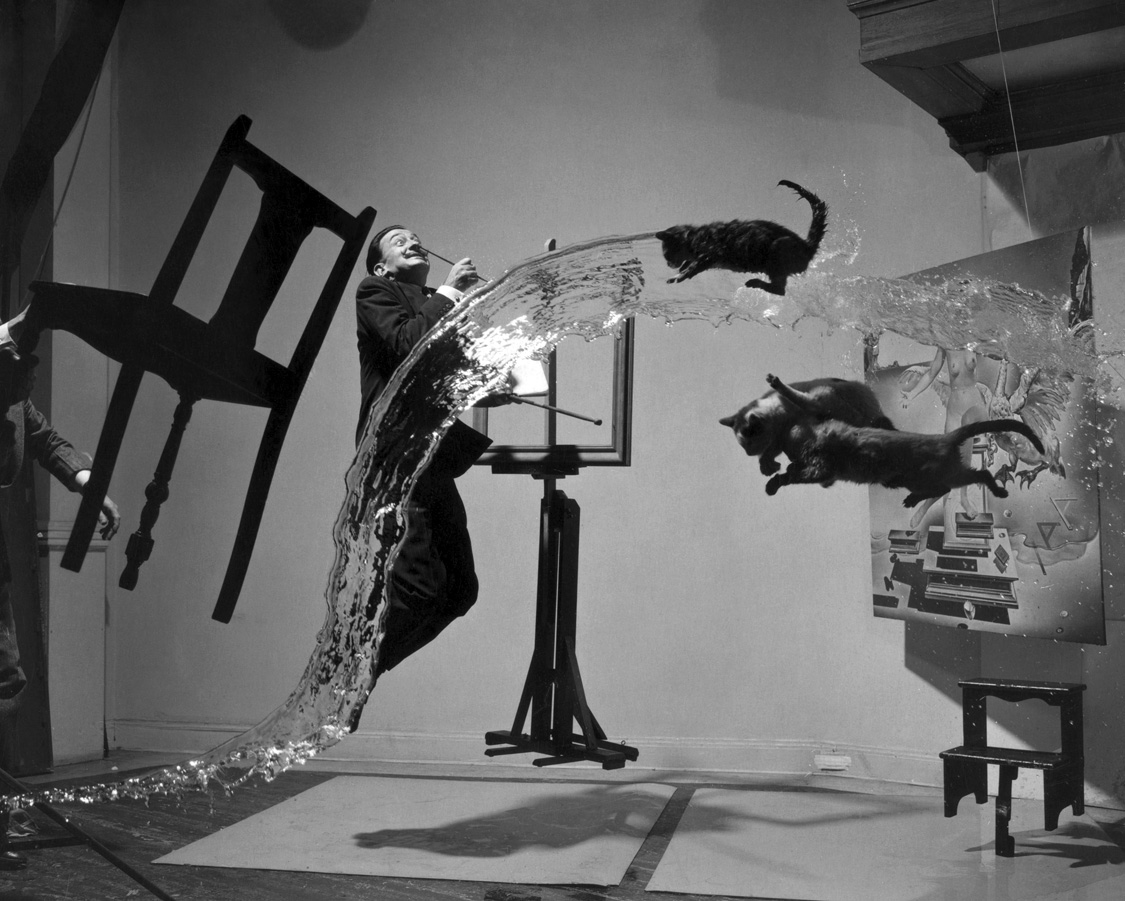
“Dalí Atomicus,” 1948. Photograph by Phillipe Halsman. © The Granger Collection, NY.
Ecstatic selection by a dead healer, pre-shamanic illness, miraculous acquisition of language, magical surgery: and yet if Arigó can be set against the panoply of medico-religious practice, one balks at calling him a shaman. We do not expect such healers to drive Chevy Opalas, nor do we imagine their guiding spirits to be dressed in surgical aprons, wielding steel scalpels. Eliade saw shamanism as a particular creation of particular societies, and his healers went through their mystical transformation only within cultures accustomed to and expecting such conversions. It is not hard to imagine that without a receptive society, the outcome might be very different. Writing of the native medicine men of Southern California while Arigó was experiencing his first visions, anthropologist George Devereux wondered “how many Indian psychotics have turned into shamans while hospitalized in an institution, although they are ready to return to their tribes.”
Reading of the sedatives prescribed by Arigó’s doctors, it appears he came close to such a fate. Why then, did he thrive? Perhaps this can be credited to the religious tolerance of a country accustomed to a vast array of native faiths. Or one might look at midcentury Congonhas do Campo and sense nostalgia for the magical myths of a vanishing rural culture. But there is another line, one that stretches even further back, along a path that winds through seance parlors of the French Second Empire, through Revolutionary Paris, Vienna, Bavaria, and into the mountains of Western Austria, where another young man was having headaches of his own.
This time the healer’s name is Johann Josef Gassner, the mountains are those of the Vorarlberg, the year is 1752, the pain so severe that the young pastor cannot even preach. Like Arigó, Father Gassner sought the help of doctors, and like Arigó, medicine failed him. Realizing at last that the Devil was the source of his afflictions, he invoked the Holy Name of Jesus, and was cured. It wasn’t long before he began to use these prayers on others: first the poor of the Vorarlberg, then after several famous cures, the wealthy. When he found a patron in the Prince Bishop of Regensburg, Count Fugger, the crowds of patients seeking his help had grown into the thousands.
As would happen to Arigó two hundred years later, opposition to Gassner developed quickly, and on three fronts. Protestants saw Gassner’s works as evidence of Catholic superstition, Catholic authorities objected to his exorcisms since they distorted the rules of The Roman Ritual. But it was secular forces that brought about his downfall. Elector Maximilian III Joseph, an enlightened despot intent on banishing superstition from rational Bavaria, convoked a commission, calling as one of the expert witnesses a Viennese physician named Franz Anton Mesmer.
Mesmer testified that he had little doubt Gassner cured his patients. Gassner’s error was attributing the cause to the Devil, while in fact there was a natural explanation, a fluidic force Mesmer called animal magnetism. Mesmer had recently cured a certain Fraulein Oesterlin of no less than fifteen severe symptoms by passing magnets over her body to create an “artificial tide” when she swallowed an iron preparation. To prove his point, the doctor used magnetic passes to provoke convulsions in the Secretary of the Commission, and then, with more passes, cure them.
In 1778 Mesmer moved to Paris, where his practice flourished. Perhaps it was the strong strain of antiestablishmentarianism of the prerevolutionary years, or anxious elites needing something for their nerves, or perhaps Mesmer’s animal magnetism was but another mysterious fluid flowing through the times. Parisians, after all, had learned from Voltaire of the mysterious Newtonian force that drew apples to the earth. They had watched Benjamin Franklin’s experiments with electricity. They were carried into the air by new gases filling their balloons. Then there was Joseph Priestley’s phlogiston, Antoine-Laurent Lavoisier’s caloric, Bishop Berkeley’s vitalistic fluid, which, distilled by evergreens, could cure all disease.
As mesmerism spread, from solitary cures to convulsing en masse around a magnetic bathtub, opposition soon arose. Pamphlets mocked Mesmer’s swooning patients, warning of improprieties committed against vulnerable magnetized ladies. Others accused Mesmer of personal enrichment. There was likely a political element to the opposition as well—mesmeric societies were fertile meeting grounds for radical ideas.
At last, in 1784, Louis XVI launched a commission of investigation, composed of some of the most celebrated men of science, including Franklin, Lavoisier, and Dr. Joseph-Ignace Guillotin, famous for his “painless” machine. To call these men “scientists” would be an anachronism; “scientist” was coined in 1833, making it—in the big picture of the history of medicine—not much older than shaman. After a series of experiments (the commission told a boy that a tree had been mesmerized—it hadn’t—he still convulsed) the commission echoed Mesmer’s own judgment of Gassner. There was little doubt patients were “cured,” but rather than animal magnetism, the effect was due to imagination. If Mesmer had naturalized Gassner’s miracles, the commission could be said to have banished them again, beyond science and back into the lands of “hope” and “faith.”
The Mughal’s nature is such that they demand miracles, but if a miracle were to be performed by some upright follower of our religion, they would say that it had been brought about by magic and sorcery. They would strike him down with spears or would stone him to death.
—Fr. Antonio Monserrate, 1590Only mesmerism didn’t go away. As the century turned, the Marquis du Puysegur discovered a process of “artificial somnambulism” quite similar to today’s hypnosis. Others explored the importance of Mesmer’s concept of rapport between doctor and patient. Mesmeric textbooks came off the presses. Germany was transfixed by the “Seeress of Prevorst,” an entranced young woman who switched from her Swabian mother-dialect to a perfect High German, and then on to a “sonorous and magnificent” tongue that had once been the “original language of mankind.” In his Mesmeric hospital in India, James Esdaile reported hundreds of surgeries performed under induced somnambulism, even petitioning the deputy governor of Bengal for a commission to prove it was so. (It ruled that seven out of ten patients truly felt no pain.)
Among those fascinated by mesmerism was a French educational reformer named Hippolyte Léon Denizard Rivail. Introduced to mediumistic seances by a friend, Rivail began an interrogation of the spirits then omnipresent in Parisian parlors, eventually codifying their teachings in his 1857 The Spirits’ Book under the nom de plume Allan Kardec. Like other spiritualists of the nineteenth century, Kardec posited a rich, eternal, evolving spirit world in communication with our own. Kardec’s work proved hugely popular, not only in France, but overseas, particularly in Brazil. There its popularity persists; at least two million Brazilians identified themselves as Kardecist “Spiritists” in the 2000 census.
The explanations of Spiritism’s acceptance in Brazil are manifold, and include the already porous boundary between the material and spirit realms in Brazilian-Indian and Afro-Brazilian religious life. Another explanation is its emphasis on healing. From his earliest writings, Kardec stressed the diagnostic and therapeutic possibilities of Spiritist medicine. Depending on the kind and severity of the disease, practitioners developed various techniques from directly engaging spirits through conversation and prayer to moving their hands over lesions in the perispirit (an invisible substance believed to surround the physical body), a practice reminiscent of Mesmer’s magnetic passes. Treatment was free, an important factor when one considers that when Spiritism arrived, Brazil possessed only two medical schools, and outside the main cities access to care was very limited. Spiritist healing centers helped to fill this vacuum, with both large hospitals and smaller communities of prayer, such as the one practicing, quietly, in the town of Congonhas.
It’s difficult to establish the degree to which Arigó was involved with the small Spiritist community in Congonhas before the visitation of Dr. Fritz. Spiritism in Brazil has always been a diverse practice. There remains debate within the Spiritist community as to what to make of Arigó’s cures, and the vast majority of Spiritist healers work solely through prayer and hand passes. Still, it was in the Centro Espírita Jesus Nazareno that Arigó operated. His memory today is maintained principally in Spiritist publications. It was Spiritist friends who first told me of his story.
Spiritist intellectuals also led Arigó’s defense against legal attacks by the Brazilian Medical Association and the Catholic Church. In 1956 Arigó was charged with curandeirismo, a word that embodies modernity’s complex relationship with alternative medicine, for it means both folk healing, and (in legal terms) the practice of medicine without a license. As fate would have it, by the time Arigó was convicted, Juscelino Kubitscheck (whose daughter Arigó was said to have cured) was president, and Arigó was pardoned.
The pardon brought Arigó only temporary peace. He was convicted again in 1964, but this time Kubitscheck was gone. As Arigó was taken to prison, a long motorcade followed his police car, honking lugubriously. By then his story had spread to the United States, where science was once again engaged in one of its cyclical flirtations with the paranormal.
By the late 1850s, the swell of scientific interest in mesmerism temporarily abated. Perhaps this was due to government censure of Kardec and other explorers of the beyond. Or perhaps it was the growing discomfort of researchers with practices then spreading widely into stage performances, fairy photographs, and fiction. But medicine couldn’t stay away from long. As the century approached its end, medical research once again began to range, moving into new geographies—with the first studies of pre-shamanic psychosis, for example—as well as into realms of the invisible. In France, physiologist Charles Richet, who would win a Nobel Prize in 1913 for his description of anaphylaxis, began to study spiritualism anew, positing the existence of an “ectoplasm,” much like Kardec’s perispirit, through which mediums communicated with disincarnate spirits. In England in 1882, the Society for Psychical Research was founded to apply “exact and unimpassioned inquiry” to elusive subjects such as extrasensory perception, mesmerism, mediumship, and vital energy. Three years later, an American branch of the society was created by, among others, William James.
It was a book published at century’s end that, in James’ words, “made the decisive step in converting psychical research into a respectable science.” From India to the Planet Mars, by Swiss psychologist Theodore Flournoy, told the story of the extraordinary metempsychotic lives of the mystic Hélène Smith. If Flournoy did not believe that his subject was actually the reincarnation of the Indian princess Simandini or that the languages she was speaking were actually Sanskrit or Martian, he also did not think she was consciously faking either. Instead, he elaborated theories of forgotten memories—“cryptamnesia”—and the “subliminal self,” a concept with striking parallels to our current concept of the unconscious.
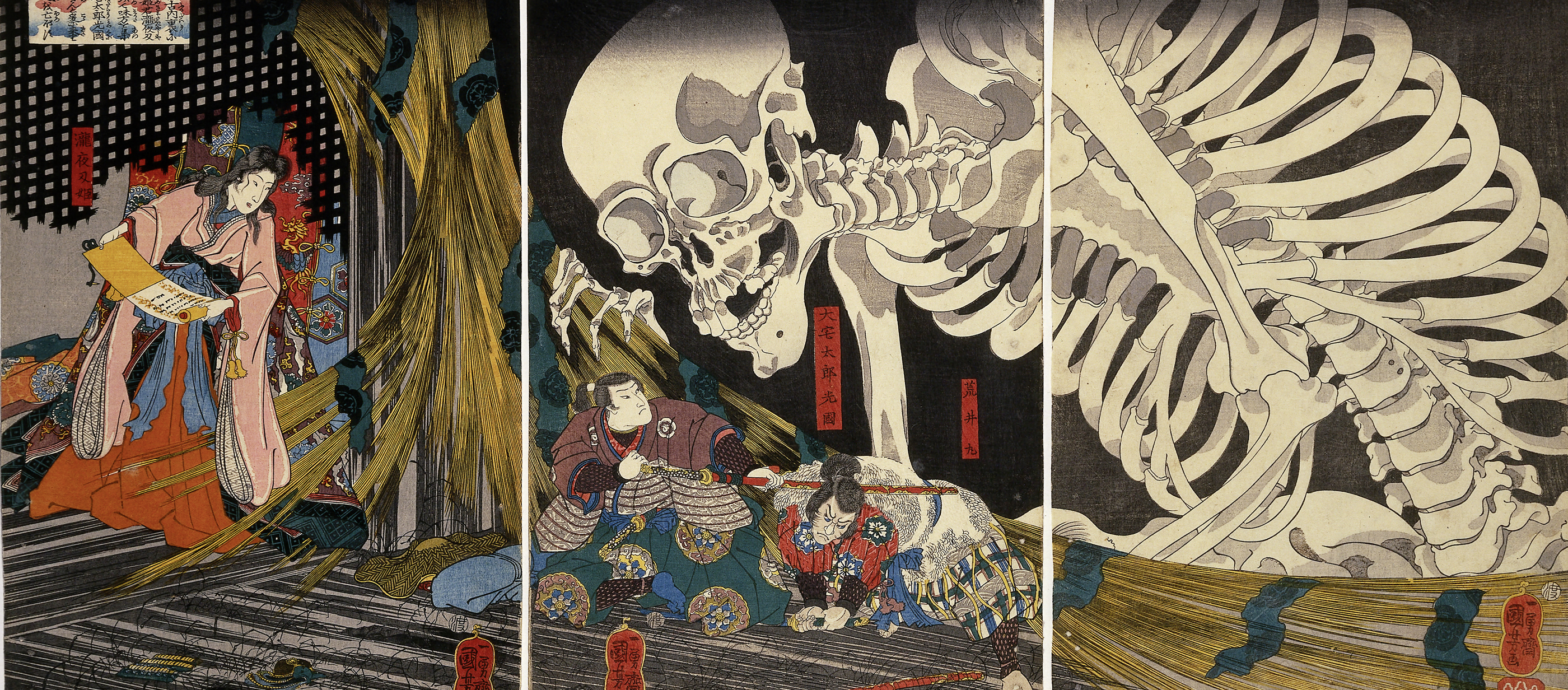
Princess Takiyasha, tenth-century conspirator against the Japanese emperor, summons a skeleton to frighten government officials searching for her, by Utagawa Kuniyoshi, c. 1844.
Even more, Flournoy’s book confirmed a shift in interest from magical content toward the magical process. The critical question was no longer whether the mystic experience was “real” or not. What mattered was what the experience revealed of the human mind and its potential. The territory of the imagination, to which Mesmer had been exiled, was slowly being explored again.
It has been argued that spirit mediums were to fin-de-siècle psychology what children are to contemporary psychology: exceptional scientific subjects from whom a vast range of psychological wisdom can be learned. It is almost impossible to find a twentieth-century psychologist not influenced in some way by stage hypnotists or seance mediums. Pierre Janet might not have agreed with Kardec on reincarnation, but he held that one person might contain multiple intelligences, conscious and unconscious, each with its own will. Carl Jung sought in vain to translate Flournoy into German and later credited Mars with shaping his understanding of schizophrenia. In 1878, Jean-Marie Charcot, the titan of nineteenth-century neurology, began to study hypnosis, using it to cause and cure hysterical symptoms in sensational public demonstrations, much as Gassner had once evoked and dissipated demons.
And Sigmund Freud? In 1970, the historian Henri Ellenberger’s Discovery of the Unconscious asked this very question, tracing the channels through which the shaman’s archaic techniques of ecstasy found their way into psychoanalytic thought. If we are looking for a moment of first contact, perhaps it was the day that the young Viennese doctor, visiting Charcot in Paris, stood in the audience as the great neurologist demonstrated the strange realm that lay beyond the conscious mind.
As with Gassner, as with Hélène Smith, it did not take long for science to find its way to Zé Arigó. Curious researchers, whether sympathetic or suspicious, had visited Arigó since his beginnings as a healer. Among these was a 1968 “expedition” of American “psi” researchers, led by the parapsychologist Andrija Puharich. Puharich is a complicated figure, a Zelig of 1960s scientific counterculture, involved in paranormal studies ranging from psychic spying to UFOs, but perhaps most famous for his promotion of the spoon-bending mind of Uri Geller. It is to him that we owe our own “ocular proof,” sixteen minutes of which are available on YouTube to anyone with a strong stomach. There Arigó may not remove a lung tumor, but he does shove a knife between a woman’s eyelid and eyeball, excise a tumor on a patient’s scalp, and appears to remove some sort of stone from an incision in a man’s flank. In the end, however, the procedures are small ones, and in the Arigó wars, they offer little conclusive evidence for either the prosecution or the defense.
Rather, it is the footage other than that of the surgeries that I think is most revealing. Early on, there is an image of Arigó sitting shirtless as the scientists scurry about him, listening to his heart, checking reflexes, recording an electroencephalogram. To me, Arigó looks jovial, even bemused, while there is something desperate about his visitors. Like the eighteenth-century mesmerist who dutifully records each trembling breath of his magnetized mademoiselle, or the Victorian photographer following his children into the woods in search of the phantoms only they can see: this dream—to find Fritz in an EEG—could be the symbol of science’s attempt to claim that which probably doesn’t belong to science at all. Just as it could be a symbol of our relationship with the frontier of the miraculous. We wish to cross it. We wish it to remain beyond our reach.
Or perhaps the mistake is to watch Arigó. At the periphery of the old footage stand crowds of patients, waiting quietly: a mother with a limp child, a fashionable girl in dark glasses, a thin man, a weeping white-haired woman in a dress of blue calico. Then Arigó steps forward and takes the old woman’s head in his hands. Suddenly, the arguments over what is happening seem to vanish. What matters are the warm calloused fingers on her face, the tears, the sense of wonder, light. She did not come here looking for reason. There is no reason to illness. There is no science that can justify why disease chooses whom it chooses, or when. There is no sense in why my heart has failed me, why I am blind, why my baby is sick, why I keep falling down. We are told to distrust otherworldly cures. But illness is otherworldly, monstrous, magical. If we are to believe the impossible, then who am I to decide whether it is the phantasm spreading inside our skull, or the ghostly hands that will cut it out?
